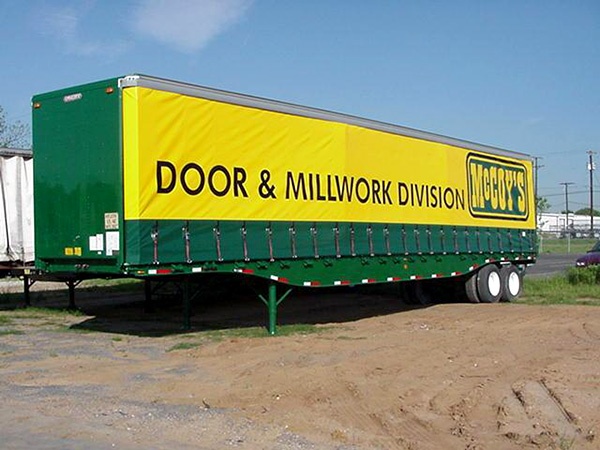
Nationwide, cargo carriers have been discovering the many benefits of running curtainside trailers and are switching to this mode of operation because of the more profitable hauling and backhauling opportunities it provides. Some of the more beneficial aspects of curtainsides include:
- Shorter loading and unloading times
- No more waiting in line for an open loading dock
- Curtainside trailers load like a flatbed but protect like a van
- No more tarping required, saving time, labor and the risk of injury
- Easy to operate
- More backhaul opportunities
- Large-scale advertising platform
One question you may have asked yourself when seeing one of these curtainside rigs running down the road is how well do curtainside trailers hold up to the elements. If the cargo you're hauling is sensitive to the elements, it would be counter-productive to use a system that allows your load to become damaged by rain and snow.
The fact is a well-constructed curtainside unit will protect your load from the elements just as well as a box trailer and certainly as well as a tarped flatbed. The combination of a singularly unique quality assurance program, coupled with teams of highly experienced design and production people, assures you, the customer, of getting the very best product made, and one that is functionally resistant to the elements. What Makes Them So Good?
With many different curtain types from which to choose, you're certain to have access to one that fits your exact needs. The RolaFreight provides an excellent barrier against all kinds of weather, completely protecting your cargo. The four corner posts are bolted, rather than welded, and have stress-relief joints where the posts are connected to the roof. This provides the durability and strength needed to tightly stretch the curtain.
These curtains are made from a 28-ounce, 2 X 2 Panama double-thread weave material. This has a rip-resistant polyester matting with a PVC coating, finally topped off with a high-gloss lacquer coat. Using a high-frequency welder, webbing reinforcements are installed both vertically and horizontally in a matrix grid pattern. The bottom edge of each curtain is equipped with a series of stainless-steel buckles set at 24" centers. Each buckle has a lower nylon strap with a wire rave hook at the end that connects to the bottom rail sill. Vertical webbing is installed at 24" centers and the top of each features a UHMW (Ultra High Molecular Weight) polyethylene roller with a sealed, stainless steel bearing.
The roof assembly is constructed from extruded aluminum for the upper rail to which a translucent fiberglass roof panel is secured around the perimeter by extruded aluminum having a clamping edge. This setup allows light to come in while keeping the weather out. As an option, an aluminum roof can be substituted for the fiberglass.
Would you like to learn more about curtainside trailers?
Feel free to request more info here …

If you found this article helpful, please subscribe to our blog for related articles. Thank you!


